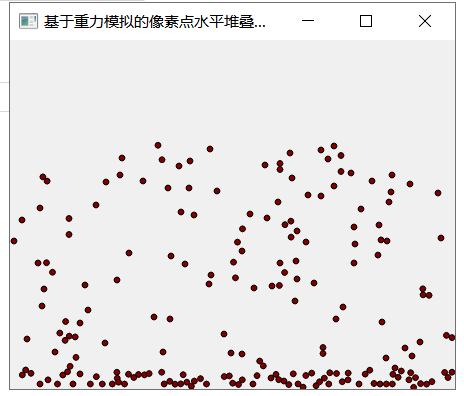Python网络爬虫是一种自动化工具,用于从互联网上抓取信息。它通过模拟人类浏览网页的行为,自动地访问网站并提取所需的数据。网络爬虫在数据挖掘、搜索引擎优化、市场研究等多个领域都有广泛的应用。以下是Python网络爬虫的一些基本概念:
1. 发送请求 (Request)
使用 requests 库
requests 是一个非常流行的 HTTP 客户端库,使用简单且功能强大。
import requestsurl = 'https://example.com'
response = requests.get(url)
print(response.text) # 打印网页内容
设置请求头 (Headers)
为了模拟浏览器行为,通常需要设置 User-Agent 和其他请求头。
headers = {'User-Agent': 'Mozilla/5.0 (Windows NT 10.0; Win64; x64) AppleWebKit/537.36 (KHTML, like Gecko) Chrome/58.0.3029.110 Safari/537.3'
}
response = requests.get(url, headers=headers)
2. 处理响应 (Response)
状态码 (Status Code)
检查响应的状态码以确保请求成功。
if response.status_code == 200:print('请求成功')
else:print(f'请求失败,状态码: {response.status_code}')
获取内容 (Content)
可以从响应对象中获取文本内容、二进制内容等。
html_content = response.text # 获取文本内容
binary_content = response.content # 获取二进制内容
3. 解析 HTML (Parsing)
使用 BeautifulSoup
BeautifulSoup 是一个强大的 HTML 解析库,可以方便地从 HTML 中提取数据。
from bs4 import BeautifulSoupsoup = BeautifulSoup(html_content, 'html.parser')
title = soup.title.string # 获取标题
print(title)
使用 lxml
lxml 是另一个高效的 XML 和 HTML 解析库,支持 XPath 表达式。
from lxml import etreehtml = etree.HTML(html_content)
title = html.xpath('//title/text()')[0] # 使用 XPath 获取标题
print(title)
4. 数据存储 (Storage)
写入文件
将提取的数据写入文件,例如 CSV 文件。
import csvdata = [['Name', 'Age'],['Alice', 30],['Bob', 25]
]with open('data.csv', 'w', newline='', encoding='utf-8') as file:writer = csv.writer(file)writer.writerows(data)
存储到数据库
将数据存储到关系型数据库(如 MySQL)或 NoSQL 数据库(如 MongoDB)。
import sqlite3# 连接到 SQLite 数据库
conn = sqlite3.connect('example.db')
cursor = conn.cursor()# 创建表
cursor.execute('''CREATE TABLE IF NOT EXISTS users (name TEXT, age INTEGER)''')# 插入数据
cursor.execute("INSERT INTO users (name, age) VALUES (?, ?)", ('Alice', 30))
cursor.execute("INSERT INTO users (name, age) VALUES (?, ?)", ('Bob', 25))# 提交事务
conn.commit()# 关闭连接
conn.close()
5. 用户代理 (User-Agent)
设置 User-Agent 可以模拟不同浏览器的行为,避免被网站识别为爬虫。
headers = {'User-Agent': 'Mozilla/5.0 (Windows NT 10.0; Win64; x64) AppleWebKit/537.36 (KHTML, like Gecko) Chrome/58.0.3029.110 Safari/537.3'
}
response = requests.get(url, headers=headers)
6. 遵守 Robots 协议
检查网站的 robots.txt 文件,确保爬虫行为符合网站的规定。
import requestsurl = 'https://example.com/robots.txt'
response = requests.get(url)
print(response.text)
7. 异常处理 (Error Handling)
处理网络请求中的各种异常,确保爬虫的稳定性。
try:response = requests.get(url, timeout=10)response.raise_for_status() # 如果响应状态码不是 200,抛出异常
except requests.exceptions.RequestException as e:print(f'请求失败: {e}')
8. 反爬策略
设置请求间隔
避免频繁请求导致被封禁。
import timefor i in range(10):response = requests.get(url, headers=headers)# 处理响应time.sleep(1) # 每次请求间隔 1 秒
使用代理 IP
使用代理 IP 可以绕过 IP 封禁。
proxies = {'http': 'http://123.45.67.89:8080','https': 'https://123.45.67.89:8080'
}
response = requests.get(url, headers=headers, proxies=proxies)
9. 法律与道德
尊重版权
不要侵犯他人的版权,合法使用数据。
保护隐私
不要收集和使用个人敏感信息,遵守相关法律法规。
合法用途
确保爬虫的用途是合法的,不用于非法活动。
总结
以上是 Python 网络爬虫的一些基本概念和技术细节。通过这些知识,你可以构建一个功能完善的网络爬虫。当然,实际应用中可能会遇到更多复杂的情况,需要不断学习和实践来提升技能。


















